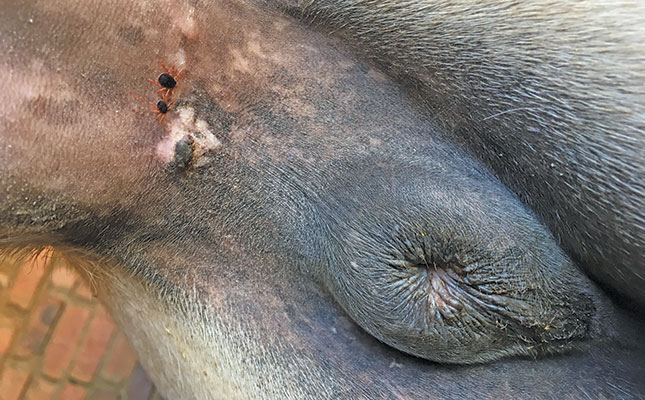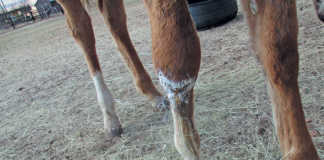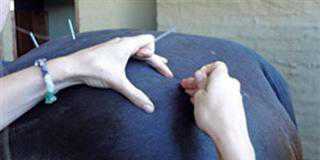
Photo: Dr Mac
Biliary, otherwise known as piroplasmosis, is caused by the blood parasites Babesia caballi and Theileria equi. These parasites belong to the order Piroplasmida, and as a result, the internationally accepted name for both forms of disease is now piroplasmosis.
The disease is considered endemic to parts of Africa, including South Africa, South America, the Middle East, Asia and some parts of Southern Europe.
In these countries, up to 90% of horses are carriers. Countries that are free of the disease insist that horses are tested prior to importation, although competition horses would be allowed to enter the country, provided they are quarantined and treated with insecticides.
Transmission
Piroplasmosis is known to be transmitted by over 30 types of ticks, but in South Africa both parasites are mainly transmitted by the red-legged tick, Rhipicephalus evertsi evertsi, as well as the blue tick, Rhipicephalus microplus and the bontpoot tick, Hyalomma truncatum.
In bontpoot ticks, the parasite can be transmitted from the adult female tick into her eggs, thus making the next generation carriers. Mechanical transmission may occur if infected blood is injected into a susceptible horse. The parasites can also be transmitted by a carrier mare to her unborn foal, resulting in abortions or newborn foals with life-threatening signs of the disease.
Symptoms and diagnosis
Clinical signs of T. equi include chronic weight loss and anaemia, with pale, sometimes slightly yellow gums.
Lymph nodes may be enlarged, and the horse may appear tired or lazy. However, it usually continues eating and its temperature often remains normal.
The resting heart rate may exceed 60 beats/ minute (the average resting heart rate for an adult horse is 32 to 36 beats/ minute). Horses may also show signs of colic.
2019In cases caused by B. caballi, the horse shows a high rectal temperature of around 40°C (the average temperature for an adult horse is between 37,2°C and 38,3°C) and stops eating. Membranes are pale or very yellow, and its urine and faeces may also appear very yellow.
Mixed infections with both parasites are common.
Non-specific signs include laminitis, colic and sudden death. On post-mortem, the carcass is often jaundiced and the spleen usually enlarged. Urine may be bloodstained. A diagnosis is made from blood smears.
Treatment
Tick control is important to prevent the disease. However, as many horses are already carriers, management also plays a role, and careful observation may lead to early detection.
Stress and other diseases such as African horse sickness can precipitate clinical signs.
Drugs used for treatment can have dangerous side effects, including severe muscle damage, kidney failure and colic, so it is strongly recommended that a veterinarian is consulted. The weight of the horse must be estimated correctly as the dose is critical.
Both blood parasites are susceptible to imidocarb. While diminazene is effective for B. caballi infections, it is not recommended.
T. equi is susceptible to oxytetracyclines that are registered for horses, and treatment should be repeated after 10 to 14 days to prevent relapses. Cortisone and vitamin B12 are useful as supportive treatments.
Dr Mac is an academic, a practising equine veterinarian and a stud owner.













